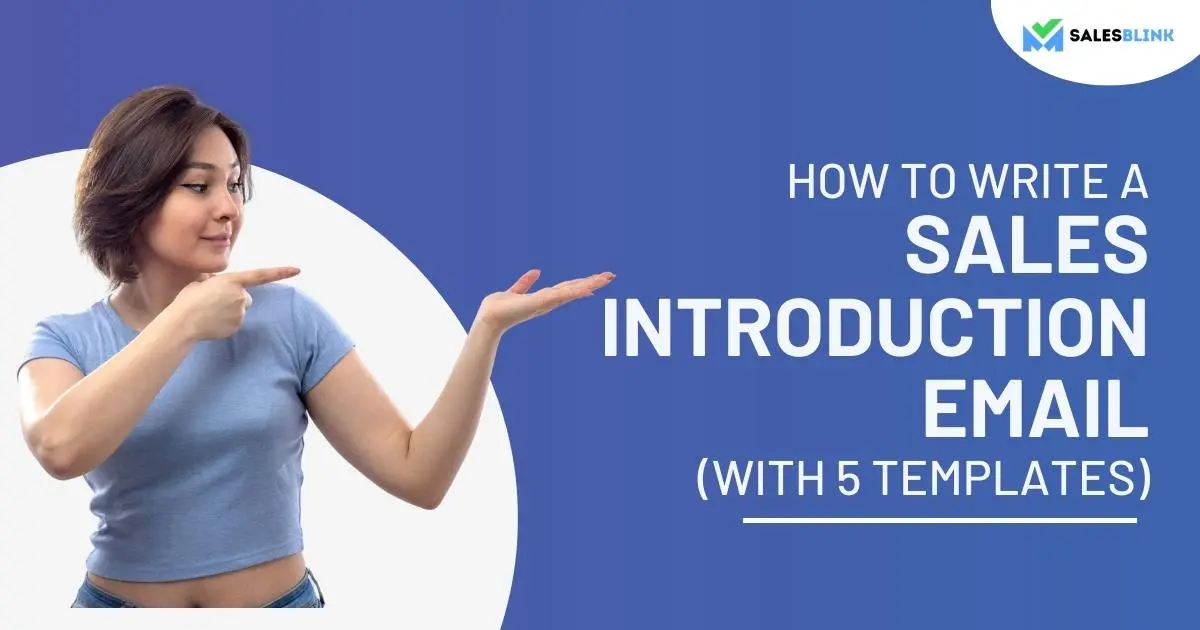How To Write A Sales Introduction Email? (With 5 Templates)
Do you know that the average ROI you get from cold emails is $38 for every $1 invested? But you can get such results only if you use the right approach. However, reps are unable to make a lasting impression with their sales introduction email and lose the outreach game.
How you interact with prospects, especially in the initial stage, can make or break your chances of closing a deal. That is why you have to be extra careful while drafting a sales introduction email. To help you out, we have templates crafted just for you! We’ll brush up on the basics first and pick a sales introduction email template.
Let’s begin.
Table Of Contents
What Is An Introductory Email?
Just as its name suggests, an introductory email for sales is one that you send to give an introduction of yourself or your company. The motive is to begin professional communication with a person.
There are several situations when you would need to write a sales introduction email. They are the following,
a. To introduce yourself to a new client
b. To introduce a new employee to an existing client
c. To contact a prospect
d. To follow up on a referral from a mutual contact
e. To follow up with someone after meeting at an event
f. To introduce a product or service that has been newly launched
Whatever your reason for sending an introductory email may be, there are some guidelines to follow for business-related emails. In sales, the introductory email sent to prospects bears a lot of value. Even though followed by a series of follow-up emails, the introductory email leaves the first impression.
How To Write A Sales Introductory Email?
A sales email needs to have certain elements that make the prospect give an affirmative response. The aim is usually to grab the prospect’s attention and push them further down the sales funnel.
Here are a few tips that will come in handy when you are writing a cold email for sales to introduce your offering. Go through them before you pick our sales introduction email template.
1. Write a catchy subject line
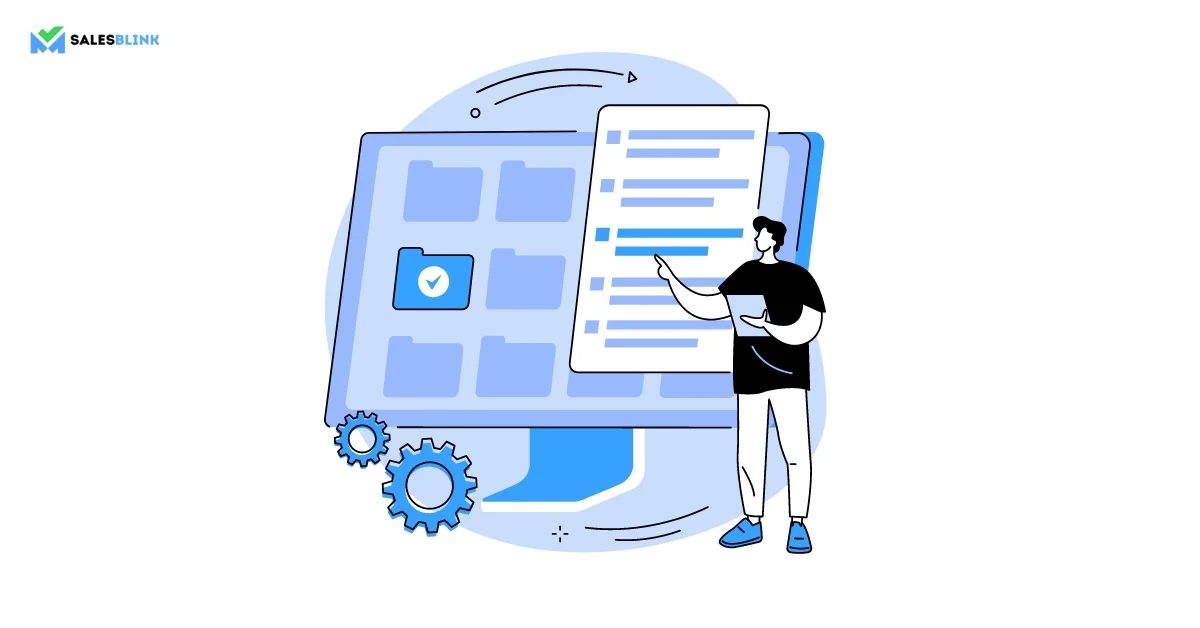
Your email subject line should be intriguing so that the recipient opens the email. The crux of the matter is to grab the prospect’s attention, or else they will ignore your email like most others lying around in their inbox. After all, why would someone spend their time reading a message from a person they don’t know?
According to research, 35% of recipients open emails by looking at the subject line alone. Therefore, paying attention to it can get you better outcomes.
Try to personalize the subject line as it will fetch you higher open rates. Only when the prospect feels that the email has something of value to offer them will they open the email. Use different personalization tactics to fetch better results.
You can try to arouse the curiosity of the recipient by using phrases with incomplete information. Avoid giving away too much in the subject line, as you want the readers to get curious and open your email. Try SalesBlink’s Free Subject line generator. However, please don’t use the subject line as a click-bait as it will ruin your image when the prospect finds out that the email contents don’t match the subject line. It certainly won’t help in your introductory email to build a long-lasting relationship with prospective clients.
Examples for subject lines for an introductory email for sales:
Hello from {{company_name}}
5 tips to {{topic}} in second half of 2021
Complete solution for {{Prospect’s_Challenge}}
Myths about {{topic}} busted
A 5-minute favor?
2. Begin with a personalized opening line
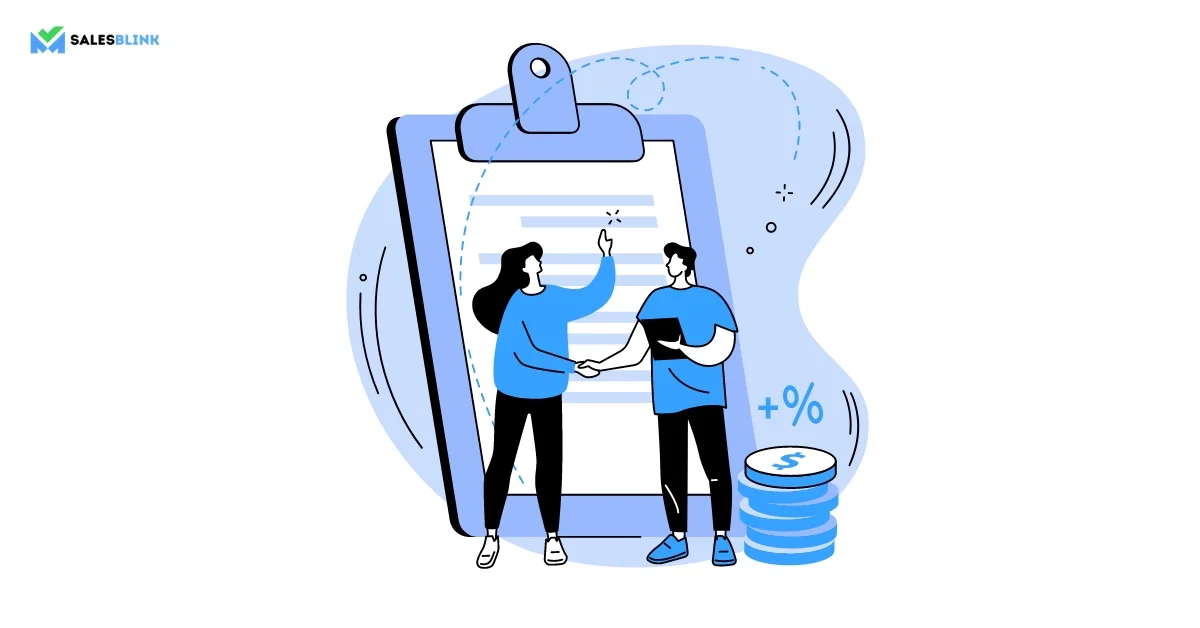
Once you get the lead to click open your email, your job of getting them to engage with you begins. It is the first line that decides whether the prospect will read the entire email or not. If you happen to open your email with a “hello” or “greeting”, it’s high time you mend your ways as it sounds dull and drab. Nobody would bother to read your email further.
You have to personalize the opening line. However, that depends on whom you are reaching out to and what the prospect’s industry is. If it requires you to be formal, you can address the prospects by name.
In the case of a conservative audience, you can stick to ‘Dear,’
For example, “Dear {{prospect’s_last_name}}“ can be a part of your sales introduction email template.
For a casual market or a less formal setting, it is alright to say ‘Hi’, ‘Hey’ or ‘Hello’. The greeting can have the first name of the recipient following it.
When you personalize the opener by mentioning the prospect’s name, it makes the person feel that you know them already. However, it is too old-school to use prospects’ first and last names together.
However, don’t begin the first line of your email body with “I am Joe, and I am sending you this email because…” or “We have never met each other but…”. Such lines would make the prospect lose interest in you completely. Instead, you can begin by placing the focus on them.
This one is better –“Have you ever tried to solve {{prospect’s_painpoint}}?
“I came to know that you are heading the software team…”
“I am inspired by your work….”
Add the above to your sales introduction email template.
Be customer-centric throughout the email as the prospect would always want to know what is in store for them.
3. Introduce yourself appropriately

While introducing yourself to the prospect, try to ensure that you can do so with the right amount of words. Just dedicate one sentence explaining what you do, as no one likes to read lengthy paragraphs that are of no use to them. Present your business offer and try to add numbers where possible.
4. Mention the reason for reaching out
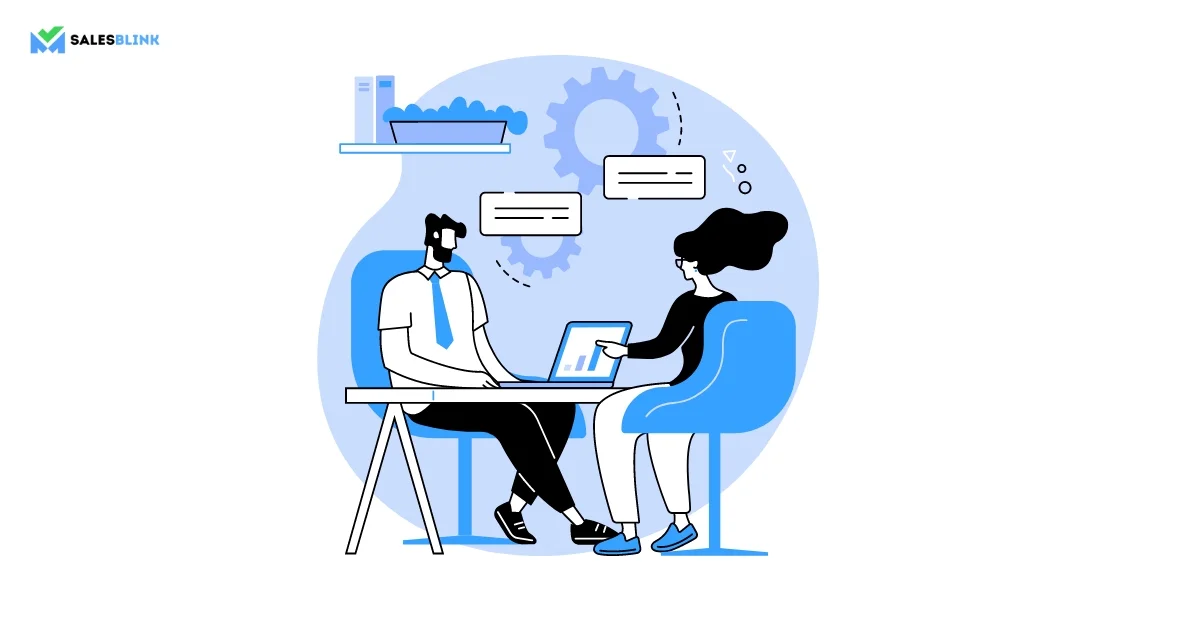
Upon finishing with the opening sentence in your sales introduction email to a client, you can explain why you are getting in touch with the prospect.
Let’s say you are reaching out to book a sales call,
Your first line would be something like – “ I noticed that you host several campus events.” Your second line can be, “ I have worked with {{company_1}} and {{company_2}} to help promote their college recruitment programs.”
You have to sound as relevant as you can to the recipient and make them feel that you are showing special interest in them and not treating them as one email address on their mailing list of 100 contacts.
5. Make your email customer-centric
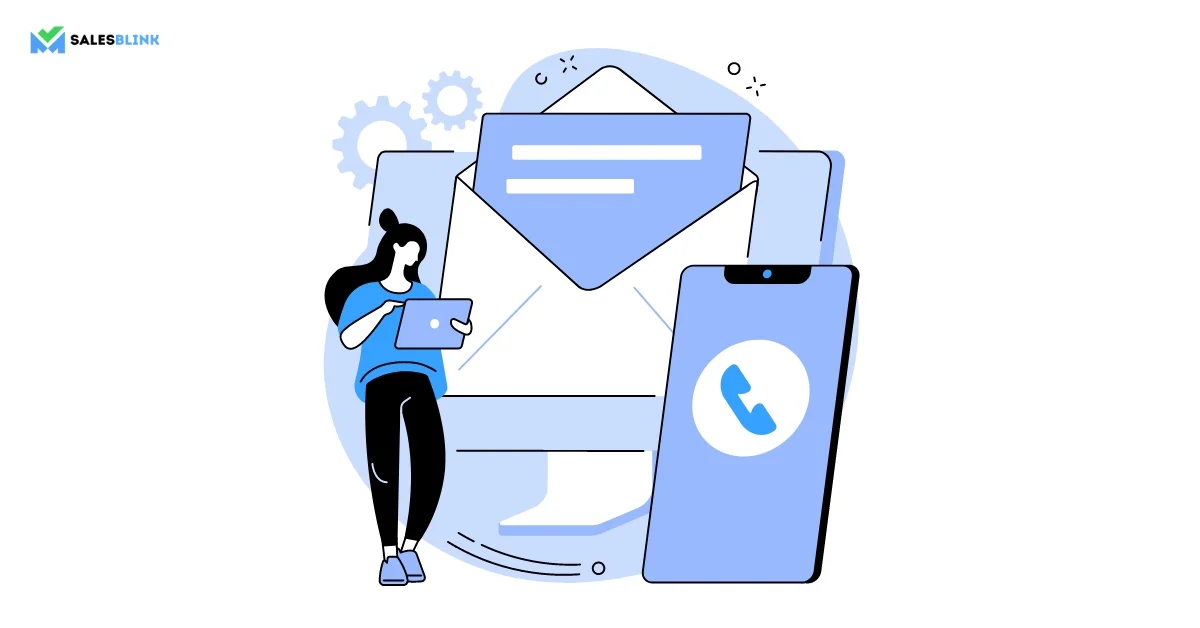
Your email has to revolve around the prospect. With a well-thought approach, you can get the desired outcome. Try to focus on the prospect and keep their interests and challenges in mind to capture their attention successfully. But no matter what you do, be sincere with your approach.
6. Highlight a mutual connection or something you share in common

Do your research to determine whether you have something in common with the prospect you are reaching out to. You could be from the prospect’s hometown or would have attended the same school or college as them. It can also be that you both share the same hobby, which can be a good ice-breaker. You can build a stronger connection with the recipient.
What is even more powerful than sharing a common ground is mentioning mutual contact. It helps you graduate from being an absolute stranger to becoming a person the prospect’s friend or co-worker knows. Inform the common contact before using them as a reference because things shouldn’t get awkward if they cross-check.
7. Provide value

In your introduction email to a new client, offer something of value to them before expecting anything in return. According to psychology, when you offer something, the other person feels elated and would want to return the favour. Even a genuine compliment would do the trick. Few other ideas that would help are recommending an article to them, suggesting a tool they may find helpful, or introducing them to a person they may benefit from.
8. Add a CTA
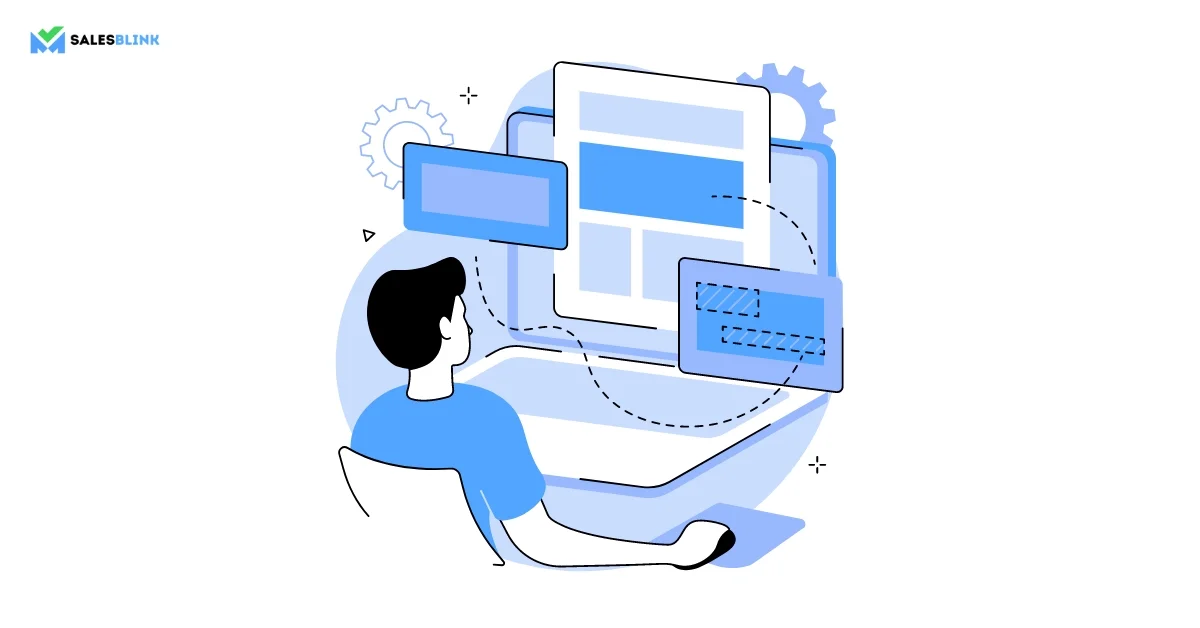
Your introduction email template should have a call-to-action or CTA. It allows readers to understand what they have to do next.
Let’s say you want them to schedule a meeting with you. It is possible to make it seamless by sharing your meeting scheduler’s calendar link with the prospect. The prospect can pick a day and time that is convenient without any hassle.
Here’s an example,
If you are wondering how to implement {{product/service}} in your organization, let’s discuss this in detail. Here is my calendar link {{link}}. Would you please pick a date that suits you?
Try your best to avoid phrases like, “I know you are busy…”, “It shall mean the world to me…” as you will sound desperate, and the recipient would feel as if they are doing a favour by giving the nod. Maintain a polite yet confident tone throughout your email for best results.
9. Sign off with a thank you
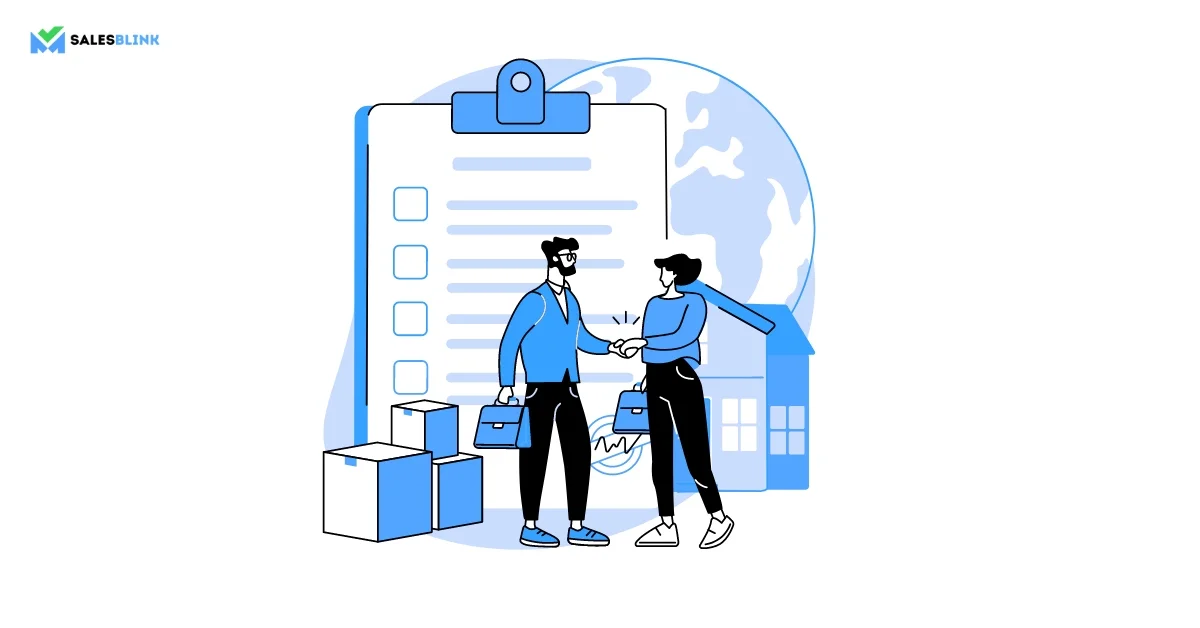
You can sign off and thank the reader for their time. There is no need to add too many lines at the end, a simple “thank you” would do. Also mention that you would look forward to hearing from them. Don’t forget to add your email signature at the end of the email, as it is your e-business card that helps prospects get in touch with you.
Note 1: Generally, it is a good practice to keep your email short and compact. No one would want to read lengthy paragraphs singing praises of your product or service. Instead, mention what your product or service can do for the prospect in the most concise manner.
Note 2: Before you send your email, you must proofread it to avoid spelling and grammatical errors. As this is an introduction email to a client, you must ensure that it makes a good impression. It would be even better if you can ask a colleague to review it for you. Most often, another reader would spot errors that you can’t and get you a better perspective.
Amidst all the sales tasks, if you feel low, turn to sales motivational quotes.
Introduction Email Templates
Pick any sales introduction email template from the following,
1. Introducing yourself to a prospect via a cold introductory email
You have to put in your best when you try to reach out to someone you don’t already know. You can pay a compliment to their work to start the conversation and turn toward what you have to offer. The email needn’t be all about yourself and your company. You have to focus on what is in store for the prospect if you want replies.
Here’s the sales introduction email template,
Subject line: 20% increase in revenue in 2 months!
Hello {{prospect’s_name}},
Your work in SaaS and your unique journey are inspiring.
I read your recent blog post on {{topic}} and found it very insightful. Your style of writing made me want to reach out to you. I have helped so many organizations like yours in increasing their revenue by 20% in 2 months. Here is a case study for your reference {{link}}.
If you are interested in implementing the strategies in your business, I will be glad to help. Here is a link to my calendar {{link}}.
Thank you,
{{your name}}
2. Connecting with someone you have met in person
When you meet someone at an event or a mutual contact introduces you to someone in person, you should consider following up with them by sending an email. Consider saving follow-up email templates for this purpose. After exchanging your electronic business card with someone you met during an event or through an introduction by your mutual contact, you should consider following them up by sending an email. There is no need for a formal introduction in this case. It is a chance to strengthen the bond and show them how your product or service can be helpful to them.
Here’s the introduction email template,
Subject line: {{prospect’s_name}}, it was great meeting you at {{event’s_name}}
Dear {{prospect’s_name}},
It was really nice meeting you at {{event’s_name}}
I understand that you are facing {{prospect’s_painpoint}}. In the last 2 years, we have worked with {{company 1}}, {{company 2}}, {{company 3}}, and have helped them {{benefit}}. Similarly, we can help {{prospect’s company}} as well.
If you are interested in taking this further, it would be great to connect with you on a 5-minute call this Wednesday afternoon to discuss how helpful {{product/service}} will be for you.
Thank you for spending your valuable time reading this email, and it was a pleasure meeting you,
Regards,
{{your_name}}
3. Introductory email to someone with whom there is a mutual connection
You would send this email when there is a mutual connection. Having someone’s recommendation is an easy way to build a new relationship. The prospect would trust you more when they come to know that a person they know is a link in between. It usually fetches better results than sending cold emails to absolute strangers.
Subject line: Hi {{prospect’s_name}}, {{mutual_contact}} wants to connect us
Dear {{prospect’s_name}},
I am reaching out to you at the suggestion of {{mutual_contact}}.
I came to know about {{prospect’s_painpoint}} from {{mutual_contact}}, and I would like to tell you that we have worked with {{company_1}}, {{company_2}}, {{company_3}} recently and helped them {{benefit}}. We can possibly help {{prospect’s_company}} too.
If you are interested, I would be happy to schedule a meeting with you. Here’s a link to my calendar. Would you mind choosing a time that works for you?
Thanks for reading this email.
Regards,
{{Your_name}}
4. Introductory email triggered by an event
An introductory sales email triggered by an event gets sent when the prospect takes a specific action such as visiting your website, filling a form, or clicking a button. It is often an automated email, but you still have to personalize it as much as possible.
Subject line: Thanks for signing up. Let’s move ahead now!
Dear {{prospect’s_name}},
Congratulations, you just signed up for our {{newsletter/podcast}}. This is the initial step to help you achieve {{benefit_product/service}}. You can expect {{correspondence_frequency}}.
We have attached some extra information that will be helpful to you.
If you want to know how we can help you, I would be happy to connect over a phone call. Does Friday afternoon work for you?
Looking forward to your reply. Thanks for reading this email.
Regards,
{{Your_name}}
5. Introduction of a new employee to an existing customer
When a new employee in the organization gets assigned to an existing customer, you have to send an introductory email. Doing so helps make the process seamless and reduces the switch friction for the prospect.
Subject : {{prospect’s_name}}, Meet {{name_employee}}
Dear {{prospect’s_name}},
I wish to inform you that there have been some changes in our organization. It gives me immense pleasure to introduce {{employee’s_name}}, our new {{job_title}} to you.
{{new_employee}} has joined us recently and is a part of {{mention_team}} and will help assist you with your concerns. We are confident that he would be able to do justice to his role and be professional throughout.
Hereafter, {{new_employee}} will handle your account with us. Please feel free to get in touch with him in case of any questions.
Regards,
{{Your_name}}
So, we have now come to the end of the sales introduction email templates.
See A Surge In Your Open Rate With Our Introduction Email Template
Now that you know how to write a sales email meant for introduction, you understand that the way you communicate with others matters a lot. Your communication skills decide the kind of response you would get from people. Email is one of the most common channels to reach out to people in the business world. With a well-crafted introductory email for sales, you can set the proper foundation for relationships with prospects.
Try to follow the above sales email introduction guidelines and introduction email templates to see how you can acquire new customers in no time.
You can thank us later!
FAQs
An introductory email for sales is one that you send to give an introduction to yourself or a company. The motive is to begin professional communication with a person.
A sales email needs to have certain elements like a catchy email subject line, personalization, clear CTA, etc that make the prospect give an affirmative response. The aim is usually to grab the prospect’s attention
Giving a genuine compliment would do the trick. Few other ideas that would help are recommending an article to them, suggesting a tool they may find helpful, or introducing them to a person they may benefit from.
